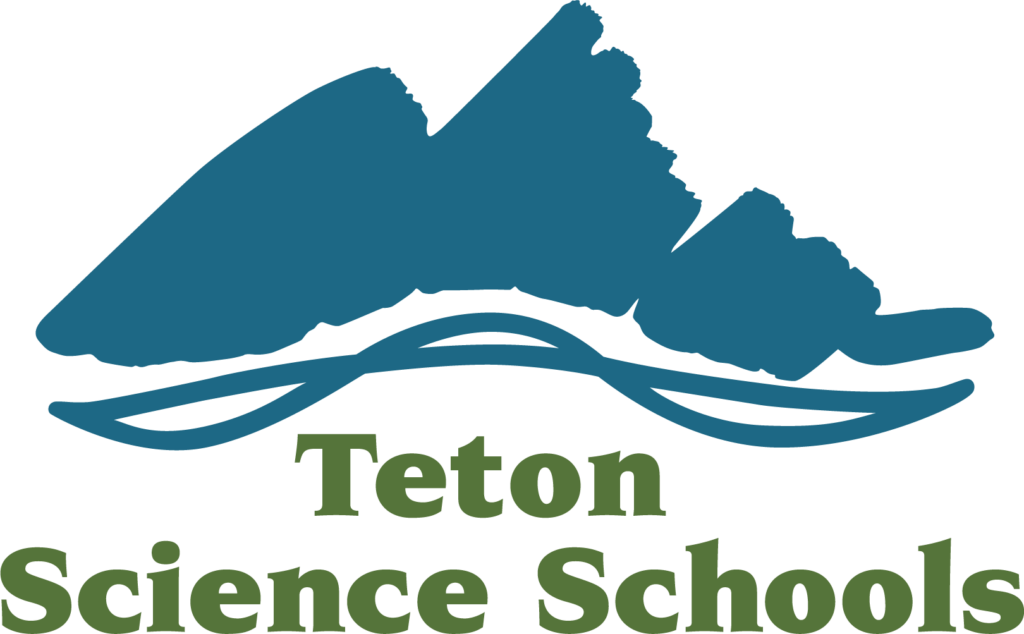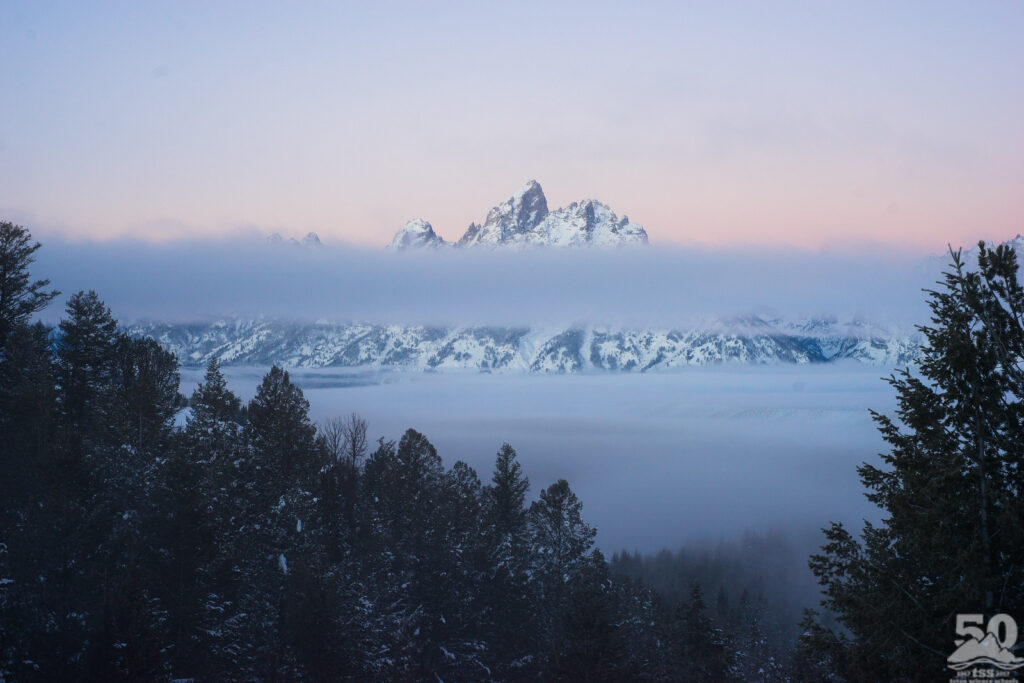Teton Science Schools recently had the opportunity to spend time with the Honorable M. Margaret McKeown, who sits on the United States Court of Appeals for the Ninth Circuit. A native Wyomingite and avid outdoorswoman, Judge McKeown joined the TSS Board of Directors in 2021. She chairs the TSS Murie Committee, which oversees the programming and archive management at the Murie Ranch.
Judge McKeown has earned countless accolades across her career, including being elected to the American Academy of Arts and Sciences, and as recently as October 2021, the Washington Women Lawyers’ President’s Award.
While her accomplishments in the field of law are well-documented, what is less well known is Judge McKeown’s professional history and personal experience in the world of place-based education. What began as a casual snowshoe in Grand Teton National Park, for example, has resulted in a love affair with the Murie legacy and a forthcoming book about Justice William O. Douglas (who himself was a pioneer of place-based education). As a late addition to the first American mountain climbing team to Mount Shishapangma, she learned the power of nature and the gift of second chances.
Below are some excerpts from TSS’ Ingrid Daffner Krasnow’s conversation with Judge McKeown. Our sincere gratitude to Judge McKeown for sharing some of her story with us.
TSS: Given the many not-for-profit organizations whose work aligns with your values, why have you chosen to lend your time and expertise to Teton Science Schools?
I am a Wyoming native, so I am quite attached to Wyoming and its land and its people. I came to the TSS Board through my work at the Murie Ranch. I really was so taken by the Muries’ story of their Alaska expeditions, their romance, their commitment to conservation, and all they had done once they moved to the homestead [in Moose, Wyoming].
When I was on the Murie Center Board, I was very interested in preserving — and am still — the archives. There are rich archives of the Muries’ notes, letters, and photographs, as well as specimens, some of which are held out at the Kelly Campus. The archives just seemed like such an incredible jewel. What’s so interesting is that they were incredible correspondents, and they kept everything. There is a beautiful set of love letters from during their courtship in Alaska. There are also a lot of letters related to conservation, so you can really track through the 40s, 50s, 60s, and beyond their impact on conservation and their roles in saving the Arctic and shaping the Jackson Hole valley because they left this incredible written legacy.
Buried in the archives were a few letters between the Muries and Supreme Court Justice William O. Douglas. Of course, as a judge and a lawyer, that correspondence interested me quite a bit. Learning about these letters prompted me to do a little more exploration about Douglas and the Muries. As a result, the more research I did, the more engaged I became. So what started as a lark and a casual interest has turned into a book that is now finished and will come out in 2022, Citizen Justice: The Environmental Legacy of William O. Douglas, Public Advocate and Conservation Champion. The Muries figure prominently in the book.
TSS: How does place-based education have an impact on learning?
You know, it’s so easy just to say “place-based education,” but then, when you are in the place, you begin to understand the importance of it. If you can come to the Murie Ranch, if you can go out to the Gros Ventre Range, if you can go into Grand Teton National Park, you have a very visceral and emotional understanding of what’s going on with the land, and with the issues that are related to the place. The Teton Science Schools physically sit within this incredible gift and wealth of a place that is so, so special.
We have a number of programs to bring young people out to the Murie Ranch. I love to read their notes after they leave, and what it meant to them and how someone from Los Angeles or another urban setting came to the Ranch and had no idea what a national park is, had no idea what it was like to sleep in a cabin, no idea what it was like to walk on the trail and see wildlife and, to feel the dirt under their feet. Those experiences speak volumes about the importance of place-based education because even when students leave the area and go home, they have had an experience that you cannot replicate in a classroom. Of course, many experiences can be replicated virtually now, because of the advance in technology. But to date, I haven’t seen anything that replicates the experience of great majesty and expanse of the outdoors the same way it does when you’re there in person.
Teton Science Schools takes the traditional notions of education, which are so important, and supplements them with a different perspective, telescoping the place as a catalyst and as a way to learn. There are not many places that do this. It’s really a wonderful perspective that TSS embraces.
In my book, Citizen Justice, I relate how Douglas very much understood that place matters. He worked really hard to get policymakers to come with him on the trail because, he said, then they would understand the importance of wilderness and the urgency of conservation. He would try to get the head of the Forest Service, the head of the National Park Service, “Come with me, walk with me, so you feel, so you understand.” He even worked on presidents. He had a very good relationship with the Kennedys, but he joked that perhaps President Kennedy didn’t really understand him, and the environment and the wilderness. He said, “The trouble with you, Jack, is that you’ve never slept in a sleeping bag.” I always thought that was shorthand for being connected with a place.
TSS: You are known as a wonderful storyteller. When there is a book written about you, what is one story that you want to make sure gets told?
One story is when I really came to terms with nature. I went on a mountain-climbing trip to Tibet in 1981. It was the first American expedition to Mount Shishapangma in Tibet, which is a 26,335’ peak. I was an accidental addition to that expedition, I was not a professional climber. I was a good climber, but not a professional climber. At the time, I was working as a White House Fellow in Washington, DC, and there was a last-minute opening. China had agreed to let two American teams into the country that year, one to Mount Everest and one to Mount Shishapangma. I tromped to and from the White House to break in a new pair of boots. The trip was fascinating. I thought I had seen vast spaces in Wyoming, which I had. But when I was out there on the Tibetan plateau for mile after mile after mile, it just seemed beyond vast – even more vast than I had seen in Wyoming or Alaska.

As we left base camp at 14,000’, eventually, the peak rose, and there were a lot of seracs. At one point, we had been snowed in for days in our tent at around 19,000’. Finally, one glorious day it dawned beautifully, so now we could start climbing again. We got everything ready, and two small groups of us headed out. We had a team of six climbers and only one sherpa, Wongdu, who was Tibetan. The idea was to head up and bury the food so that eventually we would move up there. We had been slowly moving up and back down from a 14,000-foot plateau, a few thousand feet a day. So we went up, and we were able to bury food at 22,000 or 23,000 feet. When we were coming down, the other team of two was faster and had gotten down quicker. It was around 4 o’clock in the afternoon, it was sunny and beautiful and we had successfully buried the food, so now we were looking forward to a rest.
All of a sudden, with three of us on a rope, the guy in front yells “avalanche”. And all my instincts kicked in and quickly reverted to my avalanche training, which was almost lost because everything happened so fast. I didn’t have time to take off my pack. I was trying to make an air hole with my ice axe. I got thrown down and buried at one point – I am short – and I was in the middle of the rope. Two things passed through my mind. One was, well, this is it. And the second was, what if I somehow pop out of this, what about my friend, who was in the front of the rope, what would I tell his family?
Over those five days that we had been stranded in our tent at 19,000’, a huge slab had built up. Without a sturdy base, suddenly it was like a big noise and shoop, like snow right off a roof, except it came careening right onto us. It was like being in a concrete river. I’d seen movies of avalanches before, in avalanche training and I’d gone to those ski movies in Jackson Hole and had watched these amazing snow extravaganzas, but I didn’t really understand what it meant to be in a life-threatening avalanche – that was truly something.
We eventually came out of the avalanche, after trying to “run” perpendicular to it. We were still roped at this point. I couldn’t tell you how long it took, or what had happened, but instinctively, we all had this will to survive and we got lucky and we survived. Our teammates watched the avalanche and watched us disappear and feared we had been killed. When we came out of it, the only thing to do then was to continue down to our camp while the other climbers rushed up to meet us. I remember having some hot chocolate and then I went to sleep for about 24 hours.
When I woke up, the discussion was, when would we next go up there? And for me, the answer was easy: Never. I’d been there, I’d been in the avalanche. I said I’m not going up. I’m happy to give you all my food. I will literally eat one candy bar to try to get myself back to Lhasa, and eventually out of China, but I’m not going back up there.
“No, no,” they said, “this was an aberration,” and a scouting party had said it was virtually avalanche-free. Well, that’s true, until you’re in an avalanche, and then it isn’t avalanche-free. Years later, climber Alex Lowe died on that very mountain in an avalanche. So while they argued about going back up, the other guy from Seattle and I said, “Not us.” I said “I’m going to go back to Lhasa and then eventually to Hong Kong, and I’m going to have a milkshake (which I had dreamed about daily) and then I’m going shopping. But I’m not going back up there.”
I learned a lot – you don’t often have death-defying experience and come out of it. That experience said to me that I was given this gift to live and keep going and that I needed to, in my life, do things that would help other people. I would hope to live a life that is a good life, not just for me but for those around me, and to contribute to society and to justice.

Do you have your own stories of how place-based education has influenced your life? Share them with us at communications@tetonscience.org.


